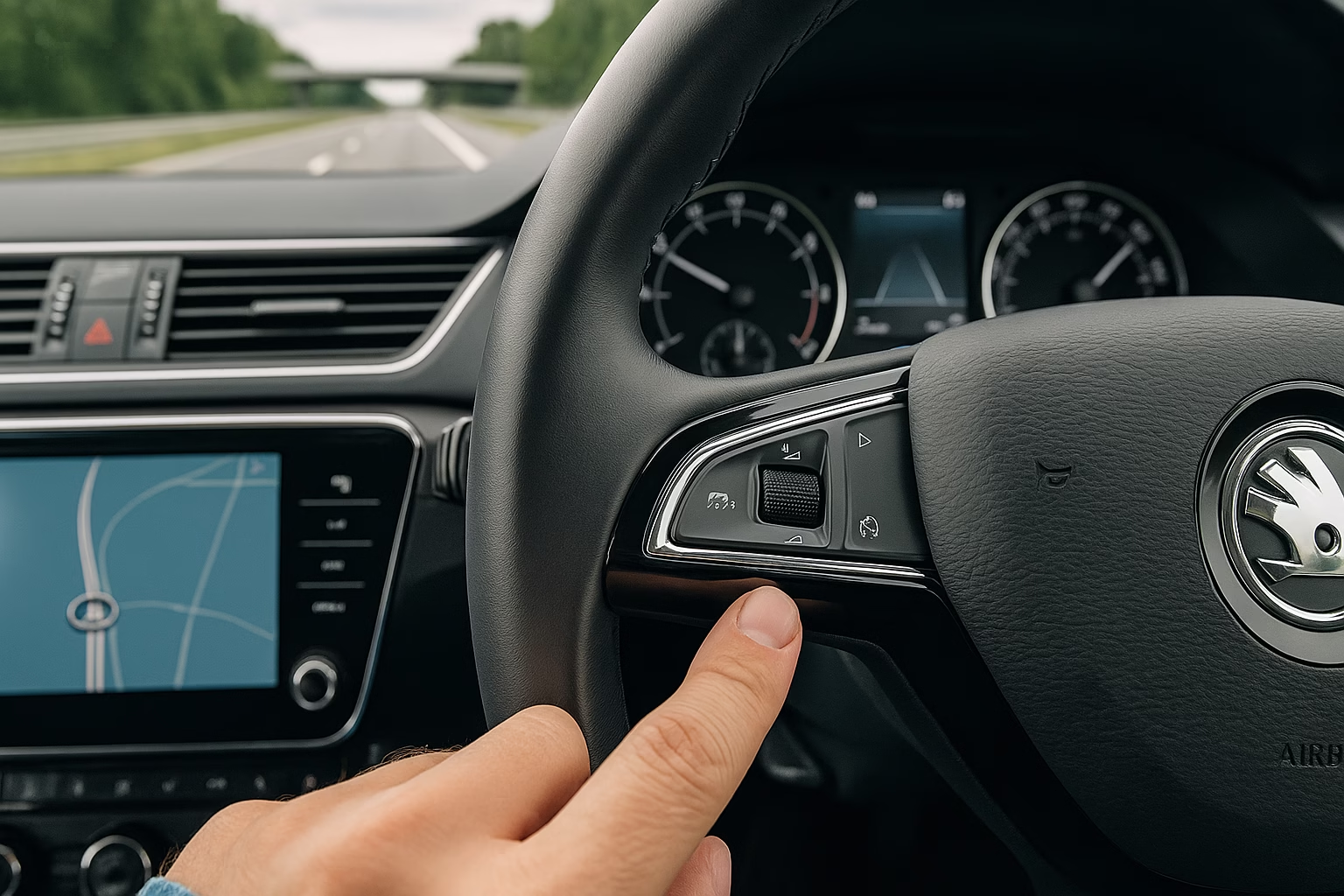Modern cars are full of electronic helpers that can make driving easier and safer. Adaptive cruise control takes over the throttle and brakes in steady traffic, lane‑keeping assist nudges the wheel to keep you centred and various driver attentiveness monitors beep if you drift or take your eyes off the road. These systems are designed to support you, but there will be moments when turning them off temporarily is the smartest course of action. Sudden phantom braking, confusing lane markings, high winds or a need to manoeuvre precisely can all be situations where assistance hinders rather than helps. A calm guide to turning off lane-keeping, adaptive cruise and other driver assistance systems on the fly. Learn where the buttons are and how to regain control safely without panicking.Knowing how to disable these features calmly and confidently is part of being an informed driver.
First, familiarise yourself with your car’s controls before you hit the road. Manufacturers place ADAS buttons in different spots, and the icons aren’t always intuitive. On many vehicles, the adaptive cruise control functions are on the steering wheel or a stalk. There will be buttons labelled “ON”, “CANCEL”, and “RES” or “SET”. To disengage adaptive cruise, press the cancel button or tap the brake pedal; this immediately hands full speed control back to you. If your system has a follow‑distance selector, pressing it will adjust the gap but won’t turn the system off. Lane‑keeping assist often has its own button, sometimes on the steering wheel (a picture of a car between lane lines) and sometimes on the dashboard near the fog light switch. Pressing it toggles the system on and off. Blind‑spot monitoring, rear cross‑traffic alert and parking sensors are usually controlled via a settings menu on the infotainment screen, but some cars have physical buttons on the dash with icons of mirrors or cars with radar waves.
Next, practise turning assistance off and on while stationary. With the engine running but the car parked safely, explore the menus and buttons. Turn on adaptive cruise and then disengage it with the cancel button or by pressing the brake pedal. Watch how the icon in your instrument cluster changes colour or disappears to indicate the system is inactive. Do the same with lane‑keeping assist. Toggle it off and notice whether a green steering wheel icon vanishes. Some systems provide haptic feedback through the steering wheel or a beep when you disable them. Making these observations in a calm setting builds muscle memory so that if the system behaves unexpectedly on the road, you can react without fumbling.
Different manufacturers use different names. Subaru’s EyeSight uses a pair of cameras above the mirror and a separate steering wheel button to switch off lane‑centring. Toyota’s Safety Sense has a button labelled “LDA” or “Lane Tracing Assist”. Volkswagen’s Travel Assist and Lane Assist can be toggled via a button on the end of the indicator stalk. In some Hyundai and Kia models, there’s a car‑icon button on the lower left dashboard. In Tesla vehicles, Autopilot and Traffic‑Aware Cruise Control can be disengaged by pressing up on the drive stalk or by pressing the brake. By reading your owner’s manual and exploring the settings, you’ll gain familiarity with your specific controls.
When you’re on the move, stay calm. If adaptive cruise begins to brake unexpectedly, rest your foot over the brake pedal and gently press down. The system will immediately disengage, and you can resume manual control. There is no need to stab the pedals or jerk the wheel. If lane‑keeping assist is pulling you toward a faded line or rumble strip, firmly hold the wheel and steer where you want to go. Press the lane assist button if you know where it is, or press through the driver assistance menu on the digital display at the next safe opportunity. Remember that the steering torque from these systems is limited; you can always overpower it with your hands. Blind‑spot monitors and cross‑traffic alerts can be startling when they beep in traffic, but a quick glance at the mirrors and a push of the dash button or a swipe through the infotainment can quiet them until conditions improve.
It’s also wise to understand which systems turn off automatically. Adaptive cruise control disengages whenever you press the brake; most lane‑keeping systems disengage below certain speeds or when you signal a lane change. Some cars automatically disable lane‑assist when you activate the indicators, which lets you change lanes without fighting the steering. Others offer a momentary override when you turn the wheel decisively. Knowing these nuances reduces the likelihood of panic and ensures you’re in control.
If your car’s features are buried in menus, consider setting up shortcuts. Many infotainment systems allow you to configure favourite buttons or quick access tiles. Assign a tile to “Driver Assistance Settings” so you can reach the toggle within one tap. Voice commands are another option; on some vehicles you can say “Deactivate lane assist” or “Turn off cruise control” and the system will comply. Test these features when parked to see if they suit you.
After you’ve temporarily disabled assistance, don’t forget to re‑enable it when conditions improve. ADAS provides genuine safety benefits when used correctly, so it should be active whenever it can help. Once the fog lifts or you’ve negotiated that tricky construction zone, press the lane‑keeping button again or reactivate cruise when you reach the motorway. Your car will often remember the last follow distance or lane assist state you used, so check the instrument cluster for confirmation.
Finally, share what you’ve learned with your passengers and co‑drivers. A partner or teenage child might not be aware of how to cancel adaptive cruise or turn off a buzzing alert. A quick tutorial could prevent panic if they encounter unexpected behaviour. For a deeper look at the situations where driver assistance can be misleading, see our post on red flags that indicate when not to trust your ADAS. The more you know about your technology, the more confidently you can use it—and the easier it is to take back control when you need to.

Hiran Alwis is an automotive lecturer and ADAS specialist with over 15 years of experience in diagnostics, advanced safety systems, and technical training. He founded ADAS Project to help everyday drivers and workshop technicians understand and safely use advanced driver assistance systems.
